A plane mirror is placed at the bottom of a tank containing a liquid of refractive index . P is a small object at a height h above the mirror. An observer O vertically above P outside the liquid sees P and its image in the mirror. The apparent distance between these two will be:
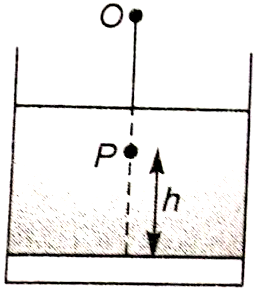
1.
2.
3.
4.


To unlock all the explanations of 6 chapters you need to be enrolled in MasterClass Course.

To unlock all the explanations of 6 chapters you need to be enrolled in MasterClass Course.
When the rectangular metal tank is filled to the top with an unknown liquid, an observer with eye level with the top of the tank can just see the corner E; a ray that refracts towards the observer at the top surface of the liquid is shown. The refractive index of the liquid will be:
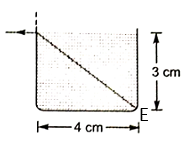
1. 1.2
2. 1.4
3. 1.6
4. 1.9

To unlock all the explanations of 6 chapters you need to be enrolled in MasterClass Course.

To unlock all the explanations of 6 chapters you need to be enrolled in MasterClass Course.
A concave mirror and a converging lens (glass with ) both have a focal length of 3 cm when in air. When they are in the water , their new focal length are:
1.
2.
3.
4.

To unlock all the explanations of 6 chapters you need to be enrolled in MasterClass Course.

To unlock all the explanations of 6 chapters you need to be enrolled in MasterClass Course.
A soldier directs a laser beam on an enemy by reflecting the beam from a mirror. If the mirror is rotated by an angle , by what angle will be reflected beam rotate?
1. /2
2.
3. 2
4. None of these

To unlock all the explanations of 6 chapters you need to be enrolled in MasterClass Course.

To unlock all the explanations of 6 chapters you need to be enrolled in MasterClass Course.
When an object is at a distance of from the poles of a concave mirror, images of the same size are formed. The focal length of the mirror is:
1.
2.
3.
4.

To unlock all the explanations of 6 chapters you need to be enrolled in MasterClass Course.

To unlock all the explanations of 6 chapters you need to be enrolled in MasterClass Course.
A given ray of light suffers minimum deviation in an equilateral prism P. Additional prism Q and R of identical shape and of the same material as P is now added as shown in the figure. The ray will now suffer:
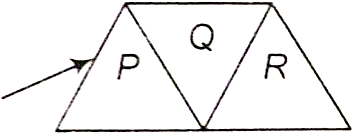
1. greater deviations
2. no deviation
3. same deviation as before
4. total internal reflection

To unlock all the explanations of 6 chapters you need to be enrolled in MasterClass Course.

To unlock all the explanations of 6 chapters you need to be enrolled in MasterClass Course.
For a spherical mirror, the graph of 1/v versus 1/u is given by:
1. 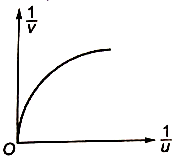
2. 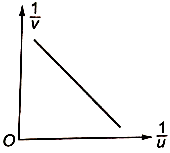
3. 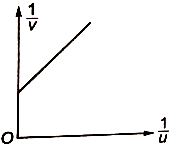
4. 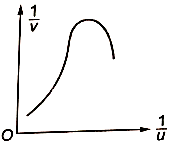

To unlock all the explanations of 6 chapters you need to be enrolled in MasterClass Course.

To unlock all the explanations of 6 chapters you need to be enrolled in MasterClass Course.
The focal length of the objective and the eyepiece of a microscope are 4 mm and 25 mm respectively. If the final image is formed at infinity and the length of the tube is 16 cm, then the magnifying power of the microscope will be:
1. -327.5
2. -3.75
3. 3.3275
4. 32.75

To unlock all the explanations of 6 chapters you need to be enrolled in MasterClass Course.

To unlock all the explanations of 6 chapters you need to be enrolled in MasterClass Course.
The figure shows a concavo-convex lens. What is the condition on the refractive indices so that the lens is diverging?
1.
2.
3.
4. None of these

To unlock all the explanations of 6 chapters you need to be enrolled in MasterClass Course.

To unlock all the explanations of 6 chapters you need to be enrolled in MasterClass Course.
Statement I: If a source of light is placed in front of the rough wall its image is not seen.
Statement II: The wall does not reflect light.
1. Statement I is true, statement 2 is true; statement 2 is the correct explanation for statement I
2. Statement 1 is true, statement 2 is true; statement 2 is not the correct explanation for statement 1
3. Statement 1 is true, statement 2 is false.
4. Statement 1 is false, statement 2 is true







